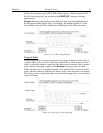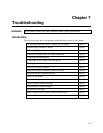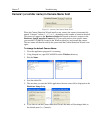
78 PIXIS System Manual Version 2.C
Kinetic Timing Modes and Shutter Control
Kinetics mode operates with three timing modes: Free Run {No Response}, Single
Trigger {Readout Per Trigger}, and Multiple Trigger {Shift Per Trigger}. Free run {No
Response} mode is used for experiments that do not require any synchronization with the
experiments. The other two modes (single trigger and multiple trigger) require that an
external TTL pulse be applied to the camera via the EXT SYNC connector on the rear of
the camera.
Figure 39. Hardware Setup dialog
Figure 40. Experiment Setup dialog
Figure 41. Sensor Readout expander:
Kinetics Readout Mode
Figure 42. Shutter and Trigger expanders:
No Response
Free Run (Non-Triggered Mode)
In the Free Run {No Response} kinetics mode, the PIXIS takes a series of images, each with
the Exposure time set through the software (in WinX, the exposure time is set on the
Experiment Setup|Main tab; in LightField on the Common Acquisition Settings
expander). The time between image frames, which may be as short as a few microseconds, is
limited by the time required to shift an image under the mask: this interimage time equals the
Vertical Shift rate (specified in ns/row) multiplied by the Window Size (the number of rows
allocated for an image frame). The exact number of frames depends on the selected Window
Size and is equal to the number of pixels perpendicular to the shift register divided by the


















